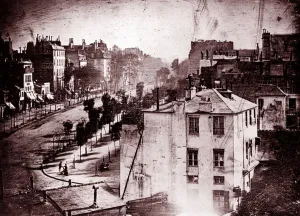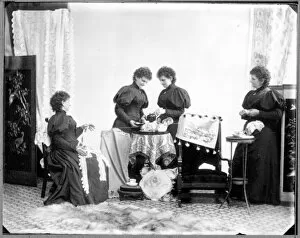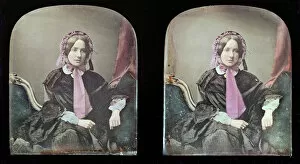Photographic Technique Collection
Photographic technique has come a long way since its inception in the 19th century
All Professionally Made to Order for Quick Shipping
Photographic technique has come a long way since its inception in the 19th century. From the iconic Boulevard du Temple daguerreotype captured in Paris's 3rd arrondissement in 1838, to the composite photo of children known as "Gems of British Columbia" from 1881, these early examples showcase the creativity and innovation that photography brought to the world. One notable pioneer was Hannah Maynard, who pushed boundaries with her composite photos. In one striking image, she poses alongside her grandson Maynard McDonald in various positions within a single frame. Another mesmerizing composition features children superimposed inside an abalone shell, creating a whimsical and ethereal effect. Maynard also experimented with multiple exposures, capturing herself having tea while simultaneously holding a skein of cotton. These captivating images demonstrate her mastery of this technique and highlight her ability to create surrealistic scenes. The power of photography is further exemplified by "Eighteen Hundred Gems of British Columbia Greet You, " an 1884 publication showcasing numerous photographs capturing the beauty and diversity of this Canadian province. Self-portraits were another avenue for artists to explore their craft. In one self-portrait from c. 1893, Hannah Maynard captures herself against a black-and-white backdrop, revealing both vulnerability and strength through her gaze. Other portraits include Charlotte Asser's daguerreotype from 1842-43 depicting an elegant woman exuding grace and poise. These early portraits remind us that even before modern technology allowed for instant selfies or filters, photographers had already mastered capturing moments frozen in time and has evolved immensely over time but remains rooted in its rich history. The works mentioned here serve as reminders that behind every photograph lies not only technical skill but also artistic vision and storytelling prowess – elements that continue to shape our understanding and appreciation of this timeless art form.








